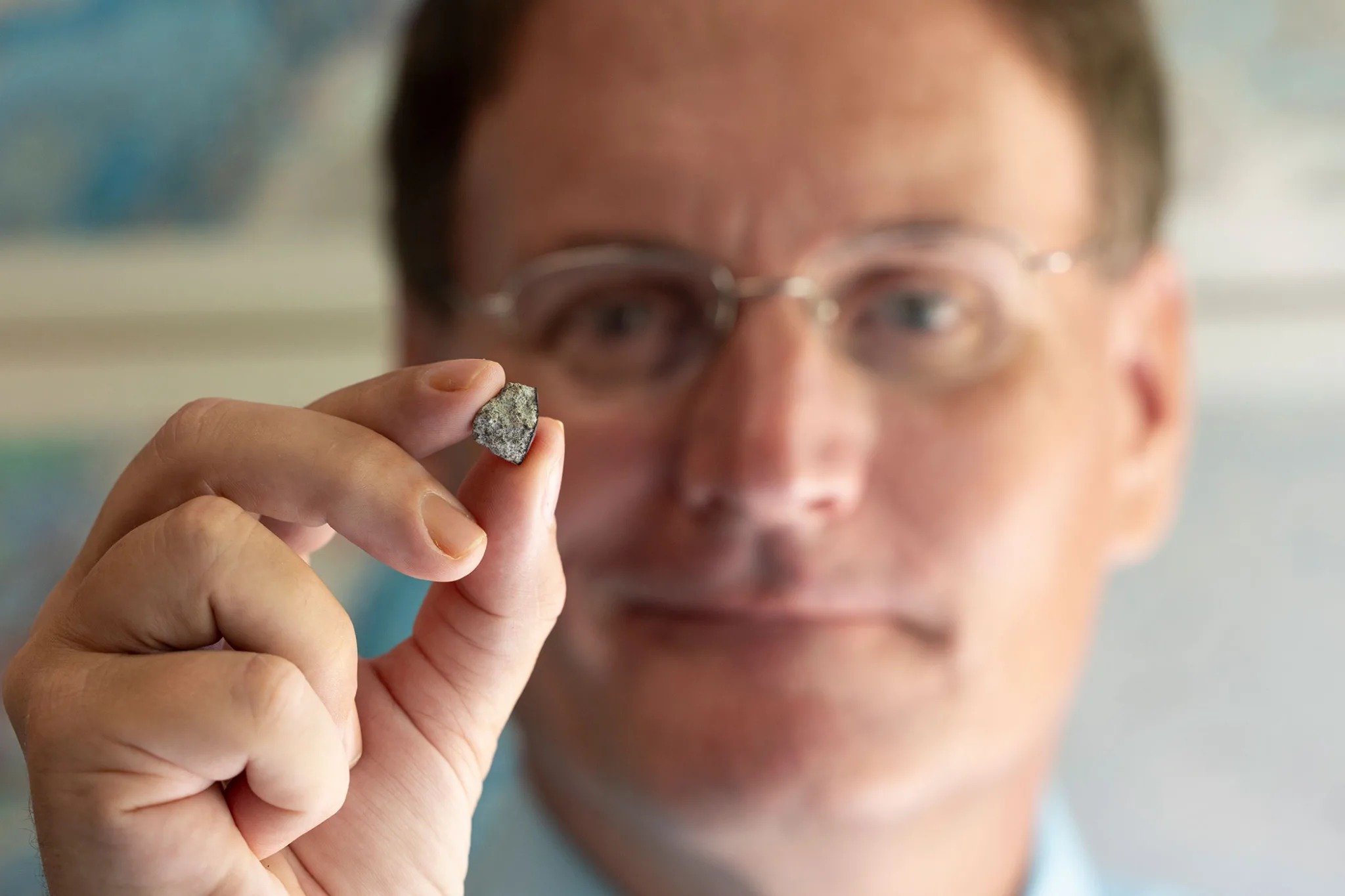
In mid-June, over 200 people across the southeastern United States spotted a brilliant fireball streaking across the sky. It was a meteorite that soon slammed into a home in McDonough, Georgia. The space rock ripped through the roof, landing just 14 feet from the startled homeowner. The impact left a small crater on the floor.
Soon after, the anonymous homeowner provided fragments of the meteorite to scientists at the University of Georgia (UGA) for analysis. On August 8, 2025, the team led by UGA planetary geologist Scott Harris, revealed that the newly named McDonough Meteorite is a common type of stony meteorite. These rocks date back to the solar system’s earliest days. The researchers estimate that it is roughly 4.56 billion years old. This is around 20 million years older than Earth.
“You’re literally holding a piece of the early solar system. It’s amazing to see material that formed before our planet even existed,” said Harris.

The space rock most likely originated in the main asteroid belt between Mars and Jupiter. It was once part of a much larger asteroid that shattered in a collision around 470 million years ago. Over billions of years, its fragments drifted through space before one finally ended its journey in Georgia this summer.
The McDonough meteorite is the 27th meteorite recovered in Georgia. It is only the sixth one ever seen falling. The UGA team plans to further analyze the space rock fragments. They hope the study will help unlock new clues about the solar system’s formation.
Additional pieces from the meteorite will soon be displayed at the Tellus Science Museum in Cartersville, Georgia. This will give visitors a rare chance to see a piece of the early solar system up close.
Resources: uga.edu, Guardian.com
Source link


